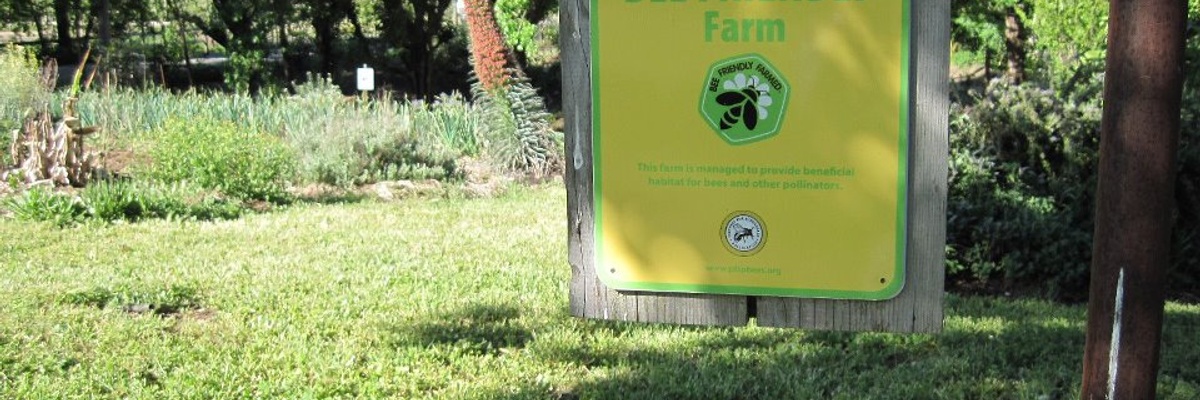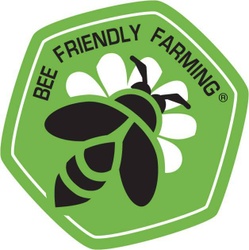Decide to become a Bee Friendly Farm and form a team
Any farm can become a Bee Friendly Farm, no matter its size or location; from small "farm to farmers market" sized farms to large industrial farms, and from urban to rural farms. You will need to make this decision with others who are involved in farming with you, whether this is your family members, staff or business partners. The most successful Bee Friendly Farms are a collaborative effort, plus, it's far more fun if you’ve got support and can share the workload!
Get to know the criteria
Criteria
Offer forage providing good nutrition for bees on 3-6% of land
Plant continuous bloom of different flowering plants throughout the growing season, especially in early spring and late autumn in temperate regions.
Offer clean water for bees.
Provide a variety of habitat for nesting through features such as hedgerows, natural brush, or bufferstrips
Practice Integrated Pest Management (IPM); reduce or eliminate the use of chemicals.
Pay the annual $45 certification fee.
Once you have decided to become a Bee Friendly Farm, and you have your organizing team together, it’s time to look at the criteria and work out how your farm and farming practices measure against them. Some farms will already be meeting the criteria and some will have some work to do to get there.
Start taking action on your farm
General Tips
Select low maintenance plants, especially drought tolerant natives, and avoid invasive species
Set mower height to allow for bee food plants, such as clover and dandelions
Apply all insecticides and fungicides after sundown when pollinators are less active, and avoid spraying during bloom.
Check all pesticide labels for toxicity to bees and eliminate chemicals with extended residual toxicity
Leave some areas mulch-free, wild, and undisturbed to provide habitat for ground nesting bees.
If there are elements you need to make improvements on to reach the criteria, Pollinator Partnership have made detailed region- specific ecoregional guides that will help you to identify native pollinators and suggest actions you can take to to support them. All you need to do is just enter your zip or post code here to download the ecoregional guide that's relevant to your Pollinator habitat, or else you can find them on the resources page.
Depending on the size of your farm, and therefore what size the pollinator friendly area needs to be (3-6% of total) these actions can take anywhere from a few weeks to a couple of years.
You can use the funding you receive from ChangeX to fund this implementation stage and you can reach out to Pollinator Partnership or ChangeX with any queries you might have about native species, pesticides, which type of plants to plant, or anything at all!
Get Certified
Once you believe you have achieved all the criteria it’s time to get accredited by the Bee Friendly Farming team at Pollinator Partnership! As a good steward for sustainable agricultural practices, you should be recognized for your efforts and have the tools to continue your work, influencing others to follow your example. This certification will help you to receive this recognition and consumer support. Sign up here. and your farm will be reviewed. To get accredited you need to pay an annual membership fee of $45. This fee goes towards cost-share efforts by growers to plant additional bee forage.
Spread the bee friendly love!
Once qualified, your location is pinned on the Bee Friendly Farming map and you are then able to use the BFF logo to indicate that your products or services are produced on lands that promote pollinator health. The BFF program offers signs, stickers and bookmarks to help raise awareness and promote your bee-friendly efforts. Once certified, visit BFF to get your BFF materials!









 "Welcome to Bee Friendly Farming on ChangeX! Here you'll find the information you need to get certified as a Bee Friendly Farm while fostering awareness and support for native pollinators. Thanks for joining, we're excited to have you with us!"
- Kelly Rourke, Director of Programs and Operations, Pollinator Partnership
"Welcome to Bee Friendly Farming on ChangeX! Here you'll find the information you need to get certified as a Bee Friendly Farm while fostering awareness and support for native pollinators. Thanks for joining, we're excited to have you with us!"
- Kelly Rourke, Director of Programs and Operations, Pollinator Partnership
